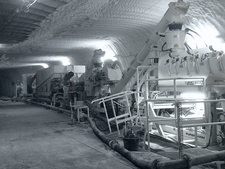On 25 April 2017, the operator responsibilities for the Asse II mine as well as the Konrad and Morsleben repositories were transferred to the Federal Company for Radioactive Waste Disposal (Bundesgesellschaft für Endlagerung mbH, BGE). Previously, the responsibility for the projects was with the Federal Office for Radiation Protection (BfS). The foundations for the change of operatorship are laid down in the "Act on the Realignment of the Organisational Structures in the Field of Radioactive Waste Disposal", which became effective on 30 July 2016. The BfS focusses on the federal tasks of radiation protection, for example in the field of defence against nuclear hazards, medical research, mobile communication, UV protection or the measuring networks for environmental radioactivity.




